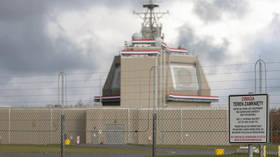North Korea’s “secret cyber-weapon”: brand new Red Star OS

Not only does North Korea have “its own Internet” – a national information network independent from the US-based Internet regulator – it also has an operating system, developed under by order of Kim Jong-il.
Russian student Mikhail, who studies in the Kim Il-sung University and writes a blog has recently purchased the Red Star Operating System (OS) and tested it. Courtesy of Mikhail, RT gives you an opportunity to take glimpse at IT life of world’s most closed country.
The Red Star is a Linux-based OS developed by North Korean IT specialists last year. Readme file, which goes with the install disc, even gives a quote from Kim Jong-il about how important for DPRK is to have its own Linux-based operating system compatible with Korean traditions.
The version tested by Mikhail is the latest build, which, according to locals, still needs polishing. The OS is not popular (yet?), with most people who need one preferring Windows XP and Windows Vista.
Mikhail bought his copy for about $5 in an information center 5 minutes walk from the university dorm. Interestingly, no permission is required for it, which is probably explained by the regulation of the sale of computers.
The system has server and client versions, and apps can be bought separately at twice the price.
User selection screen is standard. User “root” is the default one, while user “Kim” was created by Mikhail. The picture is that of a popular Korean cartoon character.
Red Star desktop.
Red Star cannot be called modest in terns if system requirements. You will need at least a Pentium III 800 Mhz with 256 Mb RAM and astounding 3Gb hard drive space!
The desktop is pretty much standard, with a My Computer icon, a trash bin and a link to a system tour. The red star in bottom left corner opens the system menu, while icons next to it are the quick launch panel. Notice the clock on the left – the year is 99th of the Juche Idea, the official North Korean ideology.
My Computer launches the file browser. Here is how it looks:
Standard applications for the system are low in number: web-browser “My Country” (which is actually Firefox in disguise), a simple word processor, a picture viewer, a pdf reader, players for audio and video files, a file archiver, a virtual disk manager and stuff like calculator or symbol table. All the applications except the web-browser are named after their functionality.
The OS has its own keyboard layouts for Korean (does not match the Windows version), English, Russian, Chinese and Japanese.
There are also four games: Minesweeper, Klondike solitaire, Jawbreaker and a logic game where the player builds correct chemical formulae.
Applications on the second disk included: service programs for the client version of Red Star, which strictly speaking should have been on the first disk, an office app suite “We”, similar to OpenOffice and another similar software suite, a program for recording CD/DVD, an e-mail client “Pigeon” (after the mail-delivering bird), Janggi board game (Korean chess), a fax communication tool, antivirus “Woodpecker”, notebook “My Comrade”, a graphics editing program, firewall “Pyongyang Fortress”, an engineer’s calculator and a Windows emulator.
The Application Manager shown here is also used for system updates.
Naenara web browser was successfully recognized by Firefox website, which offered downloads of the latest Korean version of the browser for Linux i686. Note that the default search engine is not Google but Naenara BBS. Since Mikhail was tinkering with the system in the embassy, where the Korean national network is not available, he had no opportunity to do some test searches.
Mikhail did test the antivirus, however, which (along with the firewall) was built from scratch by North Korean coders rather than re-written from an open source applications. It did well at finding and killing the viruses offered to it.
What is interesting for a North Korean product is the near-total absence of propaganda – unless you treat the word “red” in its name as an instance.












